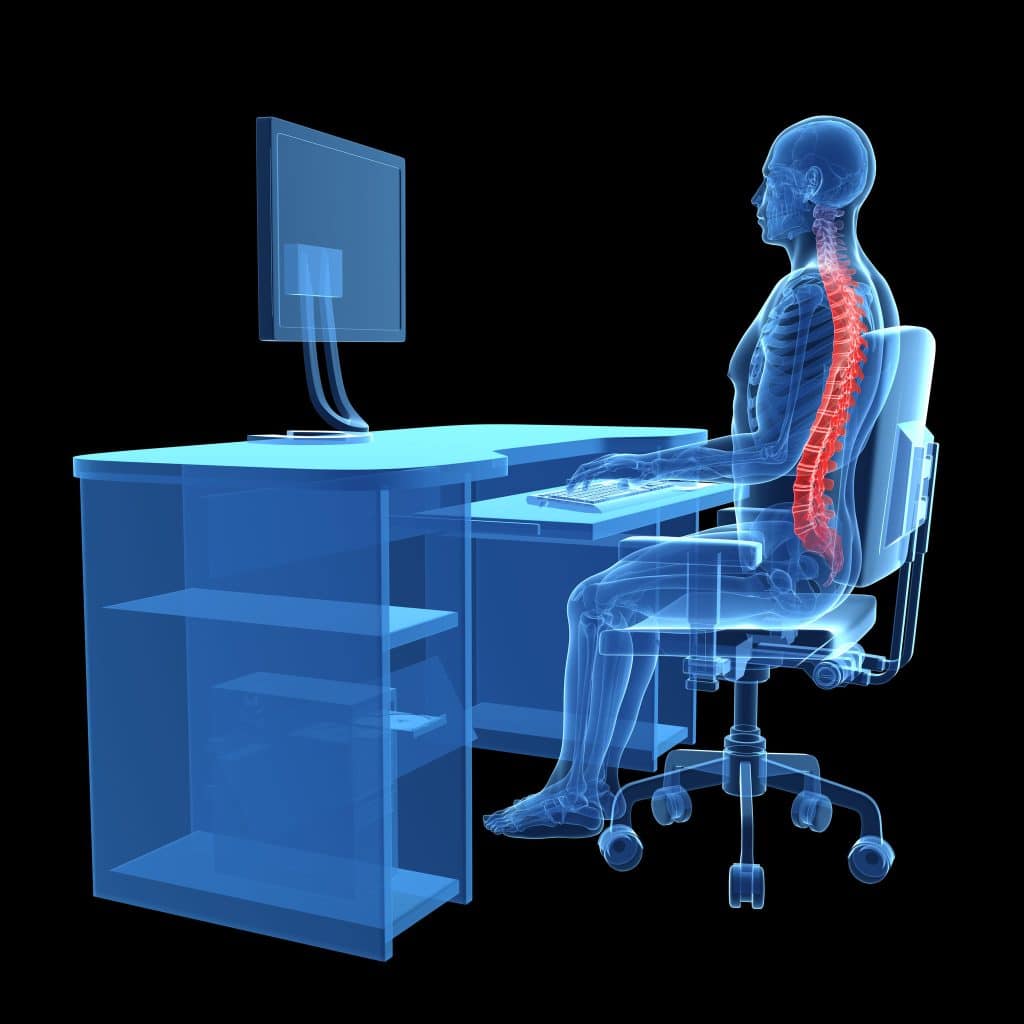Back school programs are group-based therapeutic interventions mainly offered by medical specialists or paramedical therapists and are directed towards treatment, rehabilitation and prevention of backaches.
The target population for back training as a means of secondary prevention consists of patients who have experienced a low back or neck pain and wish to prevent a recurrent episode. The teachings and exercises of back training are also used as primary prevention for individuals who have never had back pain, but are at risk: children and adolescents with poor posture, adults with unchanged posture at work and all individuals with weak muscles.
As a part of the rehabilitation and prevention of spinal injuries, especially disc diseases, patients do muscle-strengthening exercises in order to stabilize the spine and learn back-friendly methods of lifting, carrying, bending, sitting, standing, and lying. They also learn and practice the ideal movements and bodily postures for a variety of daily activities.
The subject matter to be learned consists of three parts: 1. Information about the anatomy and function of the spine, spinal biomechanics and physiopathology of the most frequent back disorders. 2. Systematic training in the back school rules for posture, standing, sitting, lying, bending, lifting. 3. Active protection of the spine through gymnastics and sports for the maintenance of a healthy back.
The 10 rules of back school are:
- Thou shalt exercise.
- Keep your back straight.
- Kneel to bend.
- Do not lift heavy objects.
- Spread out loads evenly, and keep them next to your body.
- When sitting, keep your back straight and support your upper body.
- Do not stand with straight legs.
- When lying down, keep your legs bent.
- Do sports, particularly swimming, running, or cycling.
- Train your spinal muscles every day.
Back school is based on four biomechanical principles:
1. Activating the osmotic system of the disc.
The intervertebral disc acts as an osmotic system. The pressure-dependent shifting of fluid into and out of the disc is the basis of back school rule 1: Thou shalt exercise. The regular alteration of loading and unloading of the spine, through activities including sports and gymnastics, promotes metabolic exchange in the intervertebral disc.
2. Avoiding excessive intradiscal pressure.
Some body postures and movements increase the intradiscal pressure. High intradiscal pressure leads to displacement of disc tissue and eventually to disc herniation.
Back school rules 2-6 are based on these biomechanical facts.
3. Avoiding telescoping of the intervertebral joints.
Axial loading causes the lumbar intervertebral joints (facet joints) to become telescoped into one another. Lordosis and hyperlordosis exaggerate this effect. The joint capsules are overstretched. This unfavorable situation can be avoided by gently folding the legs.
(Back school rules 7-8).
4. Building up the trunk musculature.
Training of the abdominal, erector spinae and lower limbs muscles leads to powerful muscles which stabilize the degeneratively slackened lumbar motion segments.
(Back school rules 9-10).
If these principles are disregarded, back pain arises. Lack of exercise, improper lifting and carrying of heavy loads along with weak muscles will sooner or later lead to back pain. Back school is designed to put these principles into practice.
Observing the rules of back school leads to less back pain.
Reference
- Kraemer J., Hasenbring M., Kraamer R., Taub E., Theodoridis T., Wilke H.J: Intervertebral Disc Diseases: Causes, Diagnosis, Treatment and Prophylaxis. Thieme 2009.







